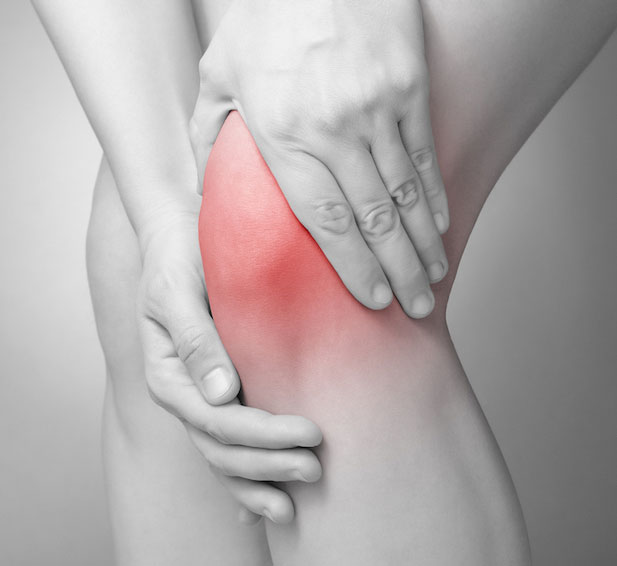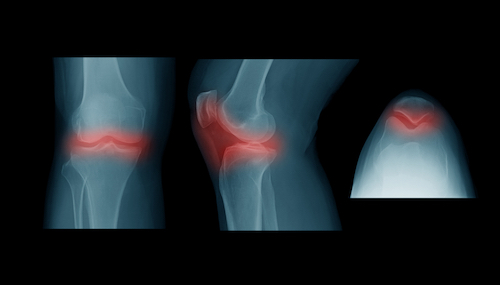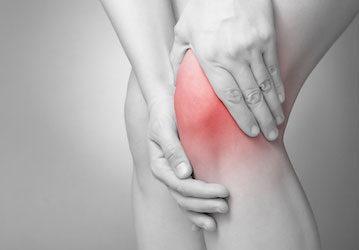 Knee pain is one of the most common injuries for Service Members. Left untreated, it can lead to a profile and lost duty time. Knee pain is a catch-all term for a several similar knee injuries. One is patello-femoral pain syndrome (PFPS), which is technically pain that occurs only between the patella (kneecap) and the femur (thigh bone) that gets worse when your knee is bent and weight-bearing (such as when going down stairs). Another common knee injury, anterior knee pain, is any knee pain located on the front side of the knee, further forward than the patella-femoral joint—where the patella meets the femur. For the purposes of this article, we’ll discuss it as one condition.
Knee pain is one of the most common injuries for Service Members. Left untreated, it can lead to a profile and lost duty time. Knee pain is a catch-all term for a several similar knee injuries. One is patello-femoral pain syndrome (PFPS), which is technically pain that occurs only between the patella (kneecap) and the femur (thigh bone) that gets worse when your knee is bent and weight-bearing (such as when going down stairs). Another common knee injury, anterior knee pain, is any knee pain located on the front side of the knee, further forward than the patella-femoral joint—where the patella meets the femur. For the purposes of this article, we’ll discuss it as one condition.
Risk factors for knee pain
Excessive body weight
One of the most common contributors to knee pain is being overweight or obese. Carrying too much body weight puts extra stress on your knees that your muscles, bones, and cartilage aren’t otherwise able to handle. While it’s true the heavy loads many Service Members are required to carry might contribute to knee pain, reducing excess body weight to normal BMI ranges by losing excess body fat can help reduce your pain.
Weak quads and hamstrings
Weak quadriceps and hamstring muscles (the front and back of your thighs) are also risk factors for developing knee pain. The quads play a major role in stabilizing your patella (kneecap), and limiting its side-to-side movement. When those muscles are weak, their ability to limit that motion is lessened, which can cause your patella to grind your femur. The hamstrings do not play a role in stabilizing the patella, but they do control movement of the hips and knees. Researcher don’t know exactly why weak hamstrings are a risk factor for knee pain, but they think it may be a sign of general hip and thigh weakness.
Overuse
Overuse is one of the most common risk factors for knee pain, especially when you have a rapid increase in physical activity. This might be a reason why knee pain is so common in basic training settings. Recruits go through a massive change in activity and lifestyle they often haven’t experienced before. If you’re generally inactive and then you start training hard for your upcoming fitness test, you might start to develop knee pain because your body isn’t ready for that much activity so fast. The best way to prevent this from happening is to increase your training gradually, over a longer period of time. (Start preparing for your PFT sooner!)
How to prevent or manage knee pain
Knee pain can be tough to manage, especially if it hurts when you’re working. The best way to prevent knee pain is to stay physically active, and do regular muscular strengthening exercises to keep your hips and thighs strong.
 If you already have knee pain, it’s still important to stay active, but you might need to lower your activity level until your pain is under control. Low-level muscular strengthening exercises targeting the hips and thighs are good for pain management. The goal is to improve patella stabilization and leg strength and movement. If you start having knee pain, see a doctor or other healthcare provider early so you can have the best possible result. Your provider might recommend physical therapy, or if that’s unavailable, you can use HPRC’s Rx3 program for treating knee pain.
If you already have knee pain, it’s still important to stay active, but you might need to lower your activity level until your pain is under control. Low-level muscular strengthening exercises targeting the hips and thighs are good for pain management. The goal is to improve patella stabilization and leg strength and movement. If you start having knee pain, see a doctor or other healthcare provider early so you can have the best possible result. Your provider might recommend physical therapy, or if that’s unavailable, you can use HPRC’s Rx3 program for treating knee pain.
Finally, pain-relieving drugs such as ibuprofen (Advil/Motrin) or acetaminophen (Tylenol) are only somewhat effective in reducing pain—and they aren’t effective as a long-term solution. They can be helpful to bring your pain down enough to do some exercises, though, which is the better option.
If you have any questions about knee pain, speak to your medical provider, or you can use HPRC’s Ask the Expert function.
